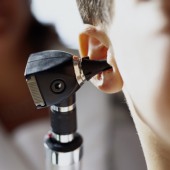
THURSDAY, May 19 (HealthDay News) — Summer fun can take a nose dive if someone in the family gets swimmer’s ear, a common infection that accounts for almost $500 million in U.S. health-care costs each year, according to a new government report.
Swimmer’s ear results in 2.4 million doctor visits annually in the United States, each visit costing an average of $200, according to the report from the U.S. Centers for Disease Control and Prevention, published in the agency’s May 20 Morbidity and Mortality Weekly Report.
“Most people think of swimmer’s ear as a mild condition that quickly goes away, but this common infection is responsible for millions of illnesses and substantial medical costs each year,” Michael Beach, the CDC’s associate director for healthy water, said in a CDC news release. Many of these cases are preventable, he added.
The painful condition is caused by water from swimming, bathing or other wet activities sitting too long in the ear canal, allowing germs to multiply. Warm temperatures and humidity increase the risk of developing swimmer’s ear, which is commonly caused by germs found in pools, lakes and other recreational swimming spots, the CDC authors explained.
The infection usually clears up with a regimen of prescription antimicrobial ear drops.
The report, which the CDC said is the first to look at the costs associated with swimmer’s ear, found that one out of 123 Americans sought medical treatment for swimmer’s ear in 2007.
Children between 5 and 14 years old had the highest rates of doctor’s visits between 2003 and 2007, the researchers found, but adults 21 and older accounted for more than half of the visits.
Forty-four percent of reported cases occurred in June, July or August, and the South was the region with the highest rates.
Researchers used data from two national databases to determine the number of outpatient visits for swimmer’s ear between 2003 and 2007. To estimate the costs of those visits, they looked at an insurance database for millions of people who have employer-provided health insurance. The cost estimate included what the insurers paid, the patients’ out-of-pocket costs, and the price of prescription treatments.
After determining that the average per-patient cost was $200, researchers multiplied that amount by the 2.4 million cases to arrive at the total health cost estimate for swimmer’s ear.
“By taking simple steps before and after swimming or coming in contact with water, people can greatly reduce their risk of this painful infection,” Beach said in the news release.
These recommendations include:
- Dry your ears after swimming or showering.
- If you’re around water, try to keep ears dry.
- Don’t put foreign objects in the ear canal or remove ear wax yourself because these can irritate skin inside the ear, possibly leading to an infection.
- Ask your doctor if you should use alcohol-based ear drops after swimming.
Itchy, flaky, swollen or painful ears could indicate you have swimmer’s ear. If you notice these symptoms, or have fluid draining from your ears, you should consult your doctor, experts advise.
More information
To learn more about swimmer’s ear, see U.S. National Library of Medicine.

